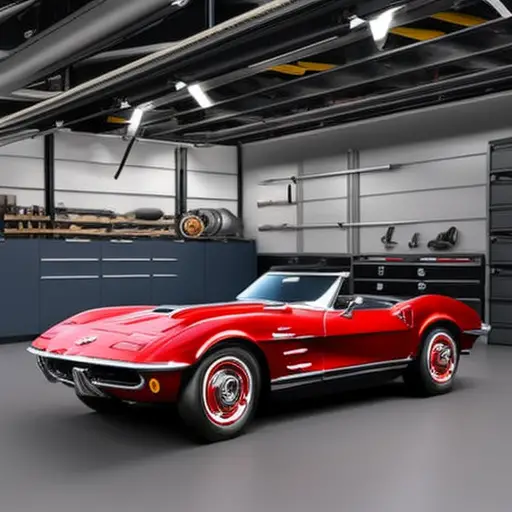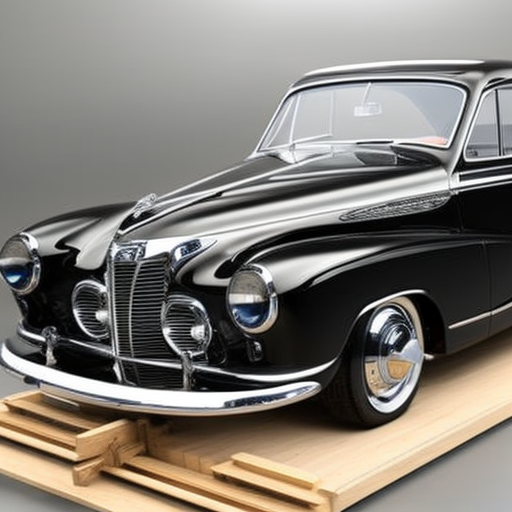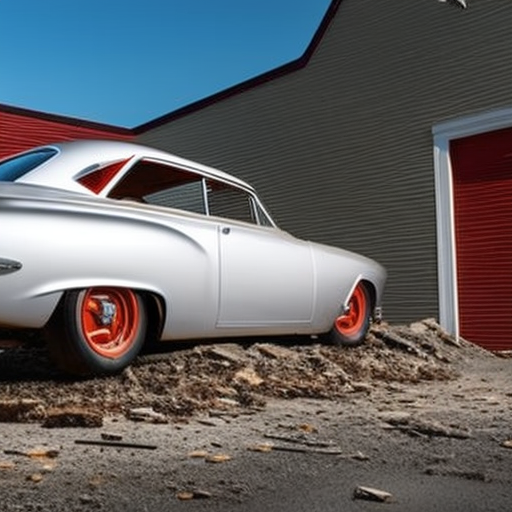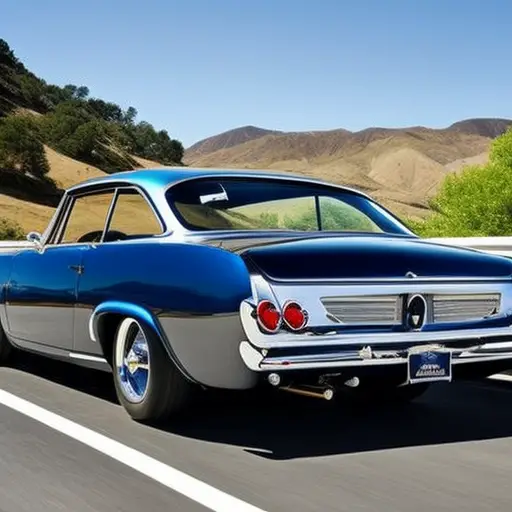Step-by-Step Guide to Restoring a Chevrolet Corvette

Restoring a Chevrolet Corvette is a labor of love, requiring meticulous attention to detail and a deep understanding of the vehicle’s mechanics.
This step-by-step guide offers enthusiasts and professionals alike a comprehensive roadmap to breathe new life into the iconic sports car.
From assessing the car’s condition to sourcing the right parts and addressing bodywork and rust, this article provides a wealth of knowledge and expertise to guide you through the restoration process with confidence and precision.
Assessing the Corvette’s Condition
The first step in restoring a Chevrolet Corvette is to thoroughly assess the vehicle’s condition to identify areas needing attention and restoration. The assessment involves a comprehensive evaluation process, carefully examining every aspect of the Corvette, from its body and frame to its engine and interior. This meticulous evaluation is crucial in developing a detailed restoration plan that outlines the specific areas that require attention and the scope of work needed to bring the Corvette back to its former glory.
During the assessment, it’s essential to conduct a cost analysis to determine the financial investment required for the restoration. This involves estimating the expenses for parts, labor, and any specialized services that may be needed. By conducting a thorough cost analysis during the assessment phase, it becomes easier to develop a realistic budget for the restoration project.
Once the assessment is complete and the restoration plan is in place, the next step is to source the right parts and components to begin the restoration process.
Sourcing the Right Parts
After completing the assessment and developing a detailed restoration plan, the next critical step involves sourcing the right parts for the Chevrolet Corvette restoration project. Finding authentic, high-quality parts is essential to ensure the restoration is successful and the vehicle maintains its value.
Here are some key considerations when sourcing parts:
-
Authenticity: It is crucial to find parts that are authentic and true to the original specifications of the Chevrolet Corvette. Authentic parts will ensure that the restored vehicle maintains its original charm and value.
-
Quality: Seek out reliable suppliers who offer high-quality parts. Quality parts will not only enhance the performance and aesthetics of the Corvette but also contribute to its longevity.
-
Compatibility: Ensure that the parts sourced are compatible with the specific model and year of the Chevrolet Corvette being restored. Compatibility issues can lead to complications during the restoration process.
-
Reputation: Look for suppliers with a solid reputation for providing genuine, reliable parts. A reputable supplier is more likely to offer accurate and high-quality components.
-
Warranty: Consider sourcing parts that come with a warranty. This provides an added layer of protection and assurance regarding the quality of the parts.
Stripping Down the Corvette
Commence the restoration process by carefully disassembling the Chevrolet Corvette to prepare for the subsequent steps. As you begin to strip down the Corvette, it’s crucial to focus on rust removal and utilize effective sandblasting techniques to ensure a clean and smooth surface for the upcoming bodywork. Rust can be a common issue in older vehicles like the Chevrolet Corvette, and addressing it during the restoration process is essential for achieving a high-quality outcome.
To evoke emotion and enthusiasm in the audience, here’s a table highlighting the importance of meticulous rust removal and sandblasting techniques:
| Key Benefits of Rust Removal and Sandblasting |
|---|
| Removes corrosion, ensuring a clean surface |
| Prepares the metal for refinishing |
| Enhances the overall durability of the vehicle |
| Provides a fresh canvas for the restoration process |
Stripping down the Corvette is a labor-intensive but vital step in the restoration process. It sets the foundation for addressing bodywork and rust, ensuring that the subsequent stages of the restoration can be executed with precision and care.
Addressing Bodywork and Rust
To effectively address bodywork and rust in the restoration of a Chevrolet Corvette, meticulous attention to detail and precision are crucial. When dealing with bodywork and rust, it’s essential to follow specific steps to ensure a thorough and effective restoration process. Here are the key aspects to consider:
-
Rust Prevention: Before any repairs are made, it’s crucial to address any existing rust and take measures to prevent future corrosion. This may involve using specialized rust inhibitors and coatings to protect vulnerable areas.
-
Surface Preparation: Properly preparing the surfaces for repair is critical. This involves removing all traces of rust, old paint, and contaminants to ensure a clean and smooth surface for subsequent work.
-
Welding Techniques: For more extensive damage, skilled welding techniques are essential for restoring structural integrity. This may involve spot welding, MIG welding, or TIG welding, depending on the specific repair requirements.
-
Panel Replacement: In cases of severe corrosion or damage, replacing entire panels may be necessary. This requires precision cutting, fitting, and welding to seamlessly integrate new panels into the existing structure.
-
Attention to Detail: Throughout the process, meticulous attention to detail is paramount to ensure a flawless result and preserve the Corvette’s original aesthetics.
Engine and Mechanical Restoration
The first step in the engine and mechanical restoration of a Chevrolet Corvette is to conduct a comprehensive assessment of the vehicle’s powertrain components and overall mechanical systems. This involves inspecting the engine, transmission, suspension, brakes, and other critical components to identify areas that require restoration or replacement.
| Engine Upgrades | Transmission Tuning | Suspension Overhaul |
|---|---|---|
| Upgrading to a high-performance intake manifold and exhaust system for increased power and torque. | Adjusting shift points and firmness to optimize performance and drivability. | Installing new shocks, springs, and sway bars to enhance handling and ride comfort. |
| Adding a performance camshaft for improved throttle response and horsepower. | Upgrading the torque converter for better launch and acceleration. | Replacing worn bushings and control arms for improved stability and control. |
| Upgrading the fuel system for increased fuel delivery and efficiency. | Fine-tuning the gear ratios for better acceleration and top speed. | Upgrading to adjustable coilovers for personalized ride height and damping settings. |
Engine and mechanical restoration also involves performance upgrades and engine tuning to maximize the Corvette’s potential on the road or track. This may include installing aftermarket components, such as high-flow air filters, upgraded fuel injectors, and engine control unit (ECU) tuning, to enhance horsepower, torque, and overall performance. Fine-tuning the engine’s parameters ensures optimal fuel delivery, ignition timing, and air-fuel ratio for improved throttle response and drivability. By addressing these aspects, enthusiasts can bring the Corvette’s powertrain to its full potential while maintaining reliability and drivability.
Interior Restoration and Upgrades
When it comes to restoring the interior of a Chevrolet Corvette, there are a multitude of exciting possibilities to consider.
From selecting the perfect upholstery color options to integrating cutting-edge technology into the dashboard, every detail plays a crucial role in enhancing the overall driving experience.
Let’s explore these points in detail to ensure that the interior restoration and upgrades are executed with precision and passion.
Upholstery Color Options
Upholstery color options for the interior restoration and upgrades of a Chevrolet Corvette play a significant role in enhancing the overall aesthetic appeal of the vehicle. When considering custom upholstery options, it’s important to weigh the benefits of leather versus fabric choices. Here are some key factors to consider when selecting the perfect upholstery color for your Corvette:
-
Custom upholstery options allow for personalized choices that reflect individual style preferences.
-
Leather upholstery offers a luxurious and sophisticated look, providing durability and easy maintenance.
-
Fabric choices provide a wide range of colors and textures, allowing for a more customized and unique interior look.
-
Consider the Corvette’s exterior color and overall design aesthetic when selecting upholstery colors to ensure a cohesive and visually appealing interior.
-
Upholstery color options can significantly impact the resale value of the Corvette, so choose wisely.
Dashboard Technology Integration
Selecting and integrating dashboard technology is a crucial aspect of interior restoration and upgrades for a Chevrolet Corvette. Customizing the infotainment system and retrofitting a digital instrument cluster can greatly enhance the driving experience and overall aesthetics of the vehicle. When choosing an infotainment system, consider features such as touchscreen capability, smartphone integration, and navigation options to ensure a modern and user-friendly interface. Retrofitting a digital instrument cluster allows for customization of the display, providing vital vehicle information in a sleek, digital format. To illustrate the available options, the following table compares popular dashboard technology upgrades for the Chevrolet Corvette:
| Infotainment System Features | Retrofit Digital Instrument Cluster |
|---|---|
| Touchscreen display | Customizable display options |
| Smartphone integration | Enhanced visual appeal |
| Navigation capabilities | Modernizes interior |
Paint and Finishing Touches
As we move into the final stages of restoring a Chevrolet Corvette, the focus shifts to the crucial aspect of paint and finishing touches.
Mastering buffing and polishing techniques, understanding color matching tips, and skillfully applying clear coat can elevate the overall look and feel of the vehicle.
These finishing touches not only enhance the aesthetics but also protect the paint, ensuring a pristine and long-lasting finish that truly reflects the craftsmanship of the restoration process.
Buffing and Polishing Techniques
When restoring a Chevrolet Corvette, the buffing and polishing techniques for paint and finishing touches are crucial for achieving a professional-grade finish. Utilizing advanced techniques is essential to attain a high gloss finish that truly sets the vehicle apart.
The choice between machine and hand polishing is a critical decision that can greatly impact the final result. Machine polishing offers efficiency and consistency, while hand polishing allows for a more nuanced and personalized approach.
Understanding swirl removal techniques is also key to achieving flawless results, as even minor imperfections can detract from the overall appearance.
With the right methods and attention to detail, these techniques can deliver professional results that elevate the aesthetic appeal of the Chevrolet Corvette.
Color Matching Tips
To achieve seamless color matching for paint and finishing touches during the restoration of a Chevrolet Corvette, precision in color selection and application is paramount.
When considering paint color options, matching the original exterior color is crucial for an authentic restoration. Techniques such as color swatch comparisons and utilizing computerized color matching systems can aid in achieving the perfect match.
Additionally, it’s essential to consider the type of paint finish and application methods to ensure consistency with the original factory look. Attention to detail during the exterior color restoration process is key, and utilizing professional-grade equipment and materials can make a significant difference in the final outcome.
Clear Coat Application
Continuing with the meticulous color matching process, the next step in the restoration of a Chevrolet Corvette involves the precise application of clear coat for a flawless paint finish and to protect the exterior. The clear coat application is a crucial stage that requires attention to detail and expertise. Here are some key considerations for this process:
- Proper surface preparation to ensure adhesion
- Application techniques such as spraying in even, overlapping passes
- Troubleshooting common issues like orange peel or runs
- Allowing adequate drying and curing time
- Clear coat maintenance and longevity for a lasting, glossy finish
Clear coat plays a vital role in preserving the vibrancy of the paint and shielding it from environmental elements. By mastering clear coat application techniques and understanding maintenance, the Corvette’s exterior will exude a showroom-worthy luster for years to come.
Reassembly and Final Checks
The reassembly process for the Chevrolet Corvette involves meticulously fitting each component together to ensure proper alignment and functionality. After the meticulous restoration work, the reassembly process is where the Corvette truly starts to take shape. This stage requires patience, attention to detail, and a deep understanding of the vehicle’s construction. Each part must be carefully installed to meet the highest standards of quality and performance. Once the reassembly is complete, a series of quality checks and final inspections are carried out to ensure that every aspect of the vehicle meets the original specifications.
| Reassembly Process | Quality Checks |
|---|---|
| Engine Assembly | Engine Compression Test |
| Interior Installation | Electrical System Check |
| Suspension Assembly | Wheel Alignment |
| Body Panel Fitting | Paint Quality Inspection |
Following the reassembly and quality checks, the Corvette undergoes a rigorous test drive to confirm that all components are functioning harmoniously. This final step ensures that the restored Corvette not only looks impeccable but also performs flawlessly.
Frequently Asked Questions
Can I Use Aftermarket Parts for My Corvette Restoration, or Should I Stick to Original Parts?
When restoring a Corvette, the decision to use aftermarket or original parts depends on the desired quality, authenticity, and budget. Aftermarket parts offer cost savings and customization, while original parts ensure authenticity and potential higher resale value.
What Should I Do if I Encounter Unexpected Damage or Issues During the Restoration Process?
When encountering unexpected damage or issues during the restoration process, it’s crucial to stay adaptable and resourceful. Utilize professional expertise to assess the damage, and diligently source high-quality replacement parts to ensure a meticulous restoration.
Are There Any Special Tools or Equipment I Will Need for the Restoration That Aren’t Mentioned in the Article?
Specialized tools and additional equipment can be essential for addressing restoration challenges and troubleshooting issues. From engine hoists to paint sprayers, having the right tools can make a significant difference in the restoration process.
How Can I Ensure That the Restored Corvette Will Retain Its Value and Authenticity?
To ensure the restored Corvette retains its value and authenticity, thorough documentation of the restoration process and parts used is crucial. Regular maintenance, using original parts, and staying true to the vehicle’s original design are also essential.
Are There Any Common Mistakes or Pitfalls to Watch Out for During the Restoration Process?
Common mistakes during restoration include overlooking hidden damage, rushing the process, and neglecting original parts. Restoration challenges may arise from sourcing authentic components and ensuring proper alignment. Diligence and attention to detail are crucial.
Conclusion
In conclusion, the process of restoring a Chevrolet Corvette requires a meticulous approach. This involves assessing the condition, sourcing the right parts, addressing bodywork and rust, and restoring the engine and interior.
With attention to detail and a passion for the process, the end result will be a beautifully restored Corvette. This restoration will capture the timeless appeal of this iconic American sports car.





